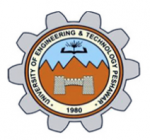The use of Titanium and its alloys in modern era can never be discarded. Continuous developments in many
industries like aviation and power generation increased its use in many applications, not only because of its chemical
properties but also because of its excellent properties including, high strength to density ratio, withstand with high
stresses, better fatigue and corrosion properties and ability to resist high temperatures. However, all these properties
of this alloy results in poor machinability, hence, make the automatic machining of these alloys nearly difficult. The
main limitation of titanium and its alloys is that it produces long chips during machining which tangled around
tool, hence; reduce tool life and sometime leads to fracture during conventional turning (CT). In recent days new
two alloys are developed named Ti-6Al-7Zr-3Nb-4Mo-0.9Nd and Ti-5Al-7Zr-7Nb-0.7Nd with better performance
in machining. These two developed alloys contain 0.9% and 0.7% neodymium by weight, respectively. It produces
discontinuous chips during metal cutting, which make possible the automatic machining. It also reduces machining
time and increase productivity. Ultrasonically assisted turning (UAT) was used to further improve its machinability.
In addition, machinability of both newly developed alloy and Ti-6246 is studied by analyzing chip compression ratio,
chip thickness and shearing angle. Overall, chip compression ratio is greater for UAT as compared to CT, which
shows improved machinability




